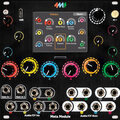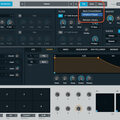West-country company Analogue Systems have been in the vanguard of modern modular synth construction for several years now, most notably with their RS Integrator system. Using Integrator modules, they've produces their first freely configurable keyboard modular. Paul Nagle sees if the spirit of patchable modular keyboards is alive, well, and living in Cornwall...





